
HOME
The first part is re-posted from Paramhansa Yogananda
The Essence of the Bhagavad Gita
Explained by Paramhansa Yogananda
As Remembered by His Disciple Swami Kriyananda
Chapter Four : Allegory in Scripture

The mixture of fact and fiction for allegorical purposes is common in scripture. It suggests the same blend in life itself: the dreamlike quality of life on earth mixed with the deep truths of the soul. An example of this literary device may be seen in the Book of Exodus of the Bible, and the Jewish people’s escape from years of bondage in Egypt. Egypt being a glyph of the lower machine plant of the body, the first three chakras.
Their escape is not an historical fact. The details of that escape are elaborated on, and contain all allegory. Exodus describes the Jews, for example, as wandering for forty years in the Sinai desert. Surely they cannot have literally spent forty years in that search. A simple glance at the map of the area shows a desert far too small for such a long trek—unless, indeed, the whole people were under a dense cloud of delusion.
To believe that it took the Jews forty years to cross it demands too great a stretch of the imagination! The time can only have been so stated deliberately in order to suggest a deeper meaning behind the quest for the Promised Land.
Wilderness, in spiritual writings, is often used allegorically to describe the inner silence, enjoyed in soul-communion. In that silence, no cultivated flowers of sense-pleasure bloom. The forty-year journey through the Sinai desert describes the long quest required to attain spiritual enlightenment.
In Exodus, all who had been born in captivity had to die before the new generation could enter the Promised Land. The meaning, here, is that every characteristic that was born in the “captivity” of ego-consciousness needs to be transcended.
Only soul-qualities, developed in the expansion of divine communion, are able to enter the Eternal Kingdom. The Promised Land described in the Bible is union with God: the land of cosmic consciousness. Delusive qualities, born of ego-consciousness, are rooted in the consciousness of separateness from God.
The ego is not the true Self. All of us are made in the image of God. The Bible, in the first chapter of the Gospel of St. John, tells us that we are all the sons of God. If we define ourselves as being different from Him, we must transcend this self-definition before we, as pure souls, can enter into the divine realm. Such egoic qualities as selfishness, hatred, passion, greed, personal ambition, covetousness, jealousy, and anger are weights that prevent the balloon of awareness from soaring up into the sky of Spirit.
St. John therefore tells us also, “No man hath seen God at any time.” Never, in other words, by human, egoic consciousness can the Divine be perceived. The divine truth is far above human realities. As the Bible states also, “My thoughts are not your thoughts, neither are your ways my ways, saith the Lord.”
The Promised Land is the reward bestowed, eventually, on all who seek God earnestly. Exodus contains an esoteric hint which reinforces this truth. The Promised Land is described as a “land of milk and honey.”
The Bible tells us, “And the Lord said, I have surely seen the affliction of my people which are in Egypt, and I am come down to deliver them and to bring them up out of that land unto a good land and a large, unto a land flowing with milk and honey.”
Indeed, certain aspects of the spiritual path are subtler than ordinary knowledge—that is, than what can be comprehended by anyone who lacks personal experience of inner realities. Those aspects are familiar, however, to yogis and to others who meditate deeply. These truths are hinted at in both the Bible and the Bhagavad Gita. Let us consider momentarily this specific anecdote in the Bible. In deep ecstasy it so happens that the tongue turns automatically upward toward the brain.
At the tip of the tongue there is a positive magnetism which, when united with its negative complement in the nasal cavity, “short-circuits” (in a manner of speaking) the flow of energy in the body and keeps it in the brain. With this physical union is formed a kind of “nectar,” described by yogis as the inner counterpart of outer sexual union.
The Hindu scriptures describe this nectar as having the taste of a blend of clarified butter, or ghee—milk in its purest form—and honey. The Hindu Vedas named this “nectar,” soma. An entire scripture was named Soma Veda. This soma nectar is able to sustain the body for long periods of time while the soul remains rapt in ecstasy, known in the yoga teachings as samadhi.
The Promised Land, then, is no mere earthly location. Israel symbolized the soul’s true land: cosmic consciousness. It must be stated here that the Jews were not, as a whole race, the chosen people of God.
For of course there were and always have been good Jews and bad Jews: the same mix that one encounters everywhere on earth of saints and sinners. The Jews in this story symbolize the sincere aspirants in every country and religion who forsake sense-slavery, and commit themselves to realizing the kingdom of God within. As Paramhansa Yogananda often put it, “God chooses those who choose Him.”
The story of Moses and the exodus of the Jews from Egypt contains other mystical symbols as well, yogic in nature since they relate to truths more often considered part of the yoga teachings. Moses, for example, is described as raising the serpent power of Kundalini: “And the Lord said unto Moses, Make thee a fiery serpent, and set it upon a pole; and it shall come to pass, that every one that is bitten, when he looketh upon it shall live.
And Moses made a serpent of brass, and put it upon a pole, and it came to pass, that if a serpent had bitten any man, when he beheld the serpent of brass, he lived.” Here two kinds of serpent energy are described: the downward moving force, which draws the consciousness toward worldly and sensual indulgence; and the upward flow, which liberates one’s consciousness from delusion.
The “pole” described here is the spine. Many swamis in India carry a danda, which is a staff they use to remind themselves to remain ever centered in the spine.
This “pole,” so described in the story of Moses, is made of brass. The serpent upon it is fiery, suggestive of the inner light which ascends with spiritual wakening. Only when this light, or Kundalini energy, is uplifted can the “poison bite” of delusion be healed.
Thus, Jesus Christ said also, “And as Moses lifted up the serpent in the wilderness, even so must the son of man be lifted up.” (John 3:14) Jesus was not speaking of his coming death on the cross.
That was an event which no one, as yet, could anticipate. It had to be a later commentator, therefore, who suggested this meaning. What Jesus was saying, rather, was that human consciousness must be lifted up, even as Moses lifted up his own consciousness in the “wilderness” of inner silence, by raising the power of Kundalini in the spine.
The present author once asked Paramhansa Yogananda whether Moses was a spiritual master. “Yes, certainly,” Yogananda replied in an affirmative tone of voice. “The Bible says he ‘lifted up the serpent [that is, the Kundalini power] in the wilderness.’”
These brief excerpts from the Bible are offered here to prepare the reader, especially if he is Jewish or Christian, for similarly deep teachings in the Bhagavad Gita. Even Hindus, after pondering the universality of those teachings, may find it easier to relate to the deeper aspects of this great Hindu scripture.
Ananda Sangha India
DLF Phase 1
B-10/8, Gurgaon 122 002 (Haryana)
India
ananda@anandaindia.org
©2004 Ananda Sangha

Some Exodus understanding from the late Egyptologist gerald massey.

The question of an historic Jesus is by no means so simple as the grossly simple early Christians thought. It is equally a question of the historic devil. From first to last the Lord and Satan are twin, and without Satan there is no Christ-Jesus nor any need of a redeemer.
In the mythology Horus was the lord of light and Sut the adversary, or the Satan of drought and darkness, from the time when the two contended as the black bird and the white (or the golden hawk), or as the two lions (our lion and unicorn a-fighting in the moonlight for the crown), as the Rehus are described in the 80th chapter of the Ritual.
As there was no Horus without Sut in the mythos, so there is no Jesus without Satan in the history. The brotherhood or twinship of Horus and Sut the betrayer is repeated in the canonical Gospels. Sut was the brother of Horus, born twin with him in one phase of the mythos, or with Osiris in another. In like manner Judas is a brother of Jesus.
Now, when Horus the youth of twelve years makes his transformation into Horus the adult, the man of thirty years, it is as the enemy and eternal conqueror of Sut who in the earth-life often had the upper hand.
But the contest of the personal Christ with a personal Satan in the New Testament is no more historical fact than the contest between the seed of the woman and the serpent of evil in the Old. Both are mythical; both are Egyptian mysteries. In the earlier narrative we have the struggle between Horus and the Apap-serpent of evil reproduced as Gospel truth by a writer in Aramaic.
In the later the conflict between Horus and Sut (or Satan in his anthropomorphic guise) has been repeated as Christian history. As mythos the Ritual explains both, and for ever disproves their right to be considered historical.
In one of the sayings assigned to Jesus it is promised that “in the regeneration when the son of man shall sit on the throne of his glory, the disciples also shall sit upon twelve thrones, judging the twelve tribes of Israel” (Matt. XIX. 28).
Now, when this was said according to Matthew, Judas the traitor was one of the twelve. Moreover, as reported by Luke, the same thing is uttered by Jesus after “Satan entered into Judas who was called Iscariot, being of the number of the twelve”, and therefore one of those who are to sit on the twelve thrones in the future kingdom, and judge the twelve tribes of Israel. No defection of the son of perdition is foreseen, no treachery allowed for.
Judas is reckoned as one of the twelve who are to sit at the table of the Lord and eat and drink in the kingdom that is yet to come (Luke XXII. 4-30). There is but one way in which the traitor could remain one of the twelve in heaven.
This belongs to the astronomical mythology, not to any human history, as when the sign of the scorpion is given to Sut-typhon. In the newly-recovered Gospel of Peter there is no sign of Judas the betrayer having been one of the twelve.
Immediately after the resurrection, it is said, the feast of the Passover being ended, “We the twelve disciples of the Lord wept and grieved, and each of us in grief at what had happened withdrew to his house” (Harris, page 56).
At the same time, in Matthew, the disciples are but eleven in number when they go to meet Jesus by appointment on the mount, with Judas no longer one of them. Sut is as inseparable from Jesus in the Gospels as from Horus in the dual figure of the Egyptian twins.
The name alone is changed; otherwise it is Sut the devil who is the tempter of Jesus during forty days and forty nights in the wilderness. It is Sut who carries Jesus to the summit of an exceeding high mountain. It is Sut who, as personal opponent, is seen to fall as lightning from heaven. It is Sut the betrayer who enters Judas to become the betrayer of Jesus. Also an historical Christ implies, involves, necessitates an historical devil. According to the canonical record the two must stand or fall together as realities. Both are personal or neither.
The Gnostics maintained that Jesus was the Lord for one year only, and that he suffered in the twelfth month, as did Osiris with the sun in the sign of Scorpio. Thus, the Egypto-gnostic Jesus throned upon Mount Olivet with the twelve around him — he being a “little apart” — is a figure of the solar god with the twelve who row the bark of Ra around the zodiac.
It is “the women” in the Gospels who announce the resurrection and proclaim that Jesus has left the tomb. According to Matthew “the woman” are “Mary Magdalene and the other Mary”, who “ran to bring the disciples word” (XXVIII. 1, 8).
According to Mark (XVI. 1) the women were Mary Magdalene and Mary (the mother) of James, and Salome, who discovered that Jesus had arisen but were afraid to make it known. Here it is Mary Magdalene, who proclaims the resurrection. It is Mary Magdalene in John (XX. 1, 2) who first announces that the Lord has arisen. Luke XXIV. 10 has it that “Mary Magdalene and Joanna, and Mary (mother) of James and other women” first found the sepulchre empty and “told these things unto the apostles”.
These conflicting accounts agree in the one essential point, that it was the woman or the women who proclaimed the resurrection, and this is as it should be according to the data in the Ritual. When the deceased comes forth from the tomb and reaches the horizon of the resurrection he exclaims, “I rise as a god amongst men. The goddesses and the women proclaim me when they see me!” It is the goddesses and the women who see the risen Horus first and proclaim him to the others.
Usually the women and the female deities are identical as the two divine sisters who are represented in the Gospels by the two Marys, but in some of the scenes there are other women in attendance as well as the two sisters-Mertae. Now, as the two Marys are originally goddesses we have the same group of goddesses and “the women” (in Luke XXIV. 10) as in the Ritual (79, 11) and both agree in proclaiming the resurrection and hailing the risen Lord with jubilation. This chapter contains all the data necessary to construct the story of the “historic” resurrection in which the Christ arises as a god amongst men, and is proclaimed by the women.
The allusions in the Ritual are very brief. The style of the writing is economical as that of the lapidary. The Egyptians neither used nor tolerated many words; verbosity was prohibited by one of their commandments.
But these allusions refer to a drama that was represented in the mysteries, the characters and scenes of which were all as well known as are those in the Christian Gospels when the play is performed at Ammergau. And this statement, made at the moment of his resurrection —“ I rise as a god amongst men. The goddesses and the women proclaim me when they see me” — contained a germ that was pregnant with a whole chapter of the future Gospel “history”.
In the Gospel according to John there is but one woman weeping at the tomb. This was Mary Magdalene, who corresponds to the first great mother Apt, she who bore the seven sons that preceded the solar Horus of the pre-Osirian cult. She, like Anup, lived on in the burial-place with those that waited for the resurrection.
She is called Apt, the “mistress of divine protections”. Apt is portrayed as kindler of the light for the deceased in the dark of death (ch. 137, Vig. Papyrus of Nebseni). Thus the old bringer to rebirth is the kindler of a light in the sepulchre. Mary Magdalene who takes her place comes to the tomb
Amenta is a huge fossil formation crowded with the dead forms of a past life in which the horny conspectuities of learned ignorance will only see dead shells for a modern museum. As a rule, Egypt is always treated differently from the rest of the world.
No Egyptologist has ever dreamed that the Ritual still exists under the disguise of both the gnostic and canonical gospels, or that it was the fountain-head and source of all the books of wisdom claimed to be divine.
In the mythology - that is, in the primitive mode of rendering the phenomena of external nature - Osiris as light-giver in the moon was tom in fourteen pieces during the latter half of the lunation by the evil Sut, the opposing power of darkness.
He was put together again and reconstituted by his son, beloved Horus, the young solar god. This representation could not have been made until it was known that the lunar light was replenished monthly from the solar source. Then Horus as the sun god and the vanquisher of Sut, the power of darkness, could be called the reconstituter of Osiris in the moon.
Stars were the children of Ra the sun-god in the solar mythos. Souls were the offspring of Ra the holy spirit in the eschatology; and here we may possibly delve down to one of the tap-roots of the legendary “Exodus.” The stars were looked on as a race of beings having souls of light that emanated from the sun.
To these the solar race, as human beings, were affiliated by means of the totemic types, which included the crocodile of Sebek, the beast of Bes, the hawk of Horus, the scarabeus of Kheper. Hence it is said by the god Ra to the righteous in Amenta, “You yourselves are tears of mine eye in your person of superior men. I have shed abroad my seed for you” (Book of Hades, 5th division, D).
These were the seed of Ra, who, as figured, were born like a tear from his eye, as a mode of effluence, and being solar they were the superior race of men, the Ruti, or men par excellence. Under the name of Khabsu in Egyptian the stars are synonymous with souls. These in their nightly rising from Amenta were the images of souls becoming glorified.
They came forth in their thousands and tens of thousands from the lower Egypt of the astronomical mythos, the earliest exodus being stellar. Thus we can realise the leader Shu, who stands upon the height of heaven, rod in hand, and who was imaged in the constellation Kepheus as the Regulus or law-giver at the pole.
As Egyptian, it was not pretended that the children of Ra were ethnical, or that the mysteries of Amenta were transactions in the earth of time.
The way up from Amenta was variously portrayed as an ascent by means of steps; by scaling a mount, or by climbing a tree, a grape-vine, a reed, a bean-stalk, or a papyrus reed. In the legends of many races we find the tradition of a deliverance from some subterranean dwelling-place which was their primeval home.
This exodus from the under-world is common in the märchen of the red men. With the Lenni Lenape Indians, the beginning was in a subterranean abode up out of which they were led by the wolf as their chief totemic zootype. Now, the wolf is an equivalent for the jackal.
In Egyptian the wolf and jackal (Seb) are synonymous; and the jackal was the guide of roads in Amenta who led the people through its wilderness, and showed a way for them to ascend into the world of light. All the myths and legends of an under-world depend upon there being an under-world, or nether-earth, and this again depends on there being a double-earth which was hollowed out by the God who represented the nocturnal sun for the passage through the mount of earth by night, and who as Egyptian was Ptah, the founder of Amenta.
the Druids taught the Gauls that they were all descended from Dis Pater, the Demiurge — that is, from the god of Hades or Amenta
The exodus from the nether-earth, or Lower Egypt, is the same as in the Hebrew and other versions of the mythos, the original of which is provably Egyptian. The Quiché “Popul Vuh” portrays the ancestors of the race as wanderers in the wilderness upon their way to the place where the sun was to rise.
They went through just as if there had been no sea. They passed on the scattered rocks rolled on the sands, that served for stepping-stones. This is why the place was called “ranged stones and torn-up sands,” the name that was given to it on their passage through the waters that divided as they went.
“At last they came to a mountain where, as they had been told, they were to see the sun rise for the first time” (Bancroft, vol. III, p. 51). This was the mount of glory in the solar mythos, and the waters which were crossed were those of the celestial Nun. The “ranged stones” in the waters correspond to the twelve stones that were set up by Joshua to mark the spot where the waters were held up for the Israelites to pass dry-footed through the river Jordan. In the Hawaiian tradition the king of the country, named Honua-i-lalo, was the oppressor of the Menehune people
The passage of the Red Sea and the destruction of those who follow the fugitives are also found in a Hottentot fable. Heitsi-Eibib was once travelling with a great number of his people, when they were pursued by the enemy. On arriving at the water which had to be crossed as the only way of escape, the leader said, “My grandfather’s father! open thyself that I may pass through, and close thyself afterwards.”
So it took place as he had said, and they crossed the water safely. Then the pursuing enemy tried to pass through the opening likewise, but when they were in the midst of the divided water it closed upon them and they perished. (Bleek, Hottentot Fables, p. 75.)
In the making of Amenta the Egyptians mapped out Egypt in the nether-world in accordance with Egypt on earth, only on a vaster scale. They had their Lower and Upper Egypts in the other life as they had in this. But Khebt, the Egyptian original of the Greek Eguptos, is more expressly the Lower Egypt, hence the lower of the two Egypts in the mythical representation. This was the Egypt below, through which the nocturnal sun and the souls of the deceased passed on their way up to the land of liberty and light.
This was the Egypt where the Lord (as Osiris, or the elder Horus) was crucified in the Tat (Rev. xI. 8), or where the solar god suffered his mortal agony, his death and burial; the Egypt from which he rose again.
Here was the wilderness of the wanderings during the forty days of the Egyptian Lent, which represented the forty days of the seed that was buried in the earth to attain the new life in the regermination of Osiris, which forty days were disguised as forty years in the historic version of the Jewish exodus. It is unfortunate and humiliating to us as a nation that Egyptology and Assyriology in England should have first fallen into the hands of devout believers in the biblical “history.”
Archaeology had to call itself “biblical” in order that a society might be founded for the study of Egyptology and Assyriology, and Egyptian exploration was for a long time limited to looking for “biblical sites” in Egypt, which are only to be met with as mythical localities in Amenta.
Nor is this mania of the historic-minded yet entirely extinct! Jewish or Gentile commentators who know nothing of the astronomical mythology, or the Egyptian origin of the Hebrew legends, have never been able to apply the comparative method to these writings.
There is but one Egypt for them. But there was another Lower Egypt, another Red Sea, another dragon, another deliverance from Rahab and the Apap-monster, and another exodus, which have not hitherto been taken into account by the Hebraists. It was not to Egypt topographically that the ransomed of the Lord were to return singing the songs of Zion. There is another and a truer version of these mystical matters possible, even as there was of old.
The creation of Amenta in the Egyptian mythos has been already explained as the work of Ptah and the seven Knemmu or navvies who were his assistants in opening up the under-world, and who in the Hebrew rendering become the seven princes that digged the well, referred to in one of the fragments of ancient lore (Num. xxi. 18), which seven princes in the Semitic legends are identified with the chariot of the Lesser Bear.
Amenta was a second terra firma for the souls of the departed, a mental fulcrum to the eye of faith laid on the physical foundation of the solar mythology for those who travelled the eternal road. Thus the origin of the exodus, as Egyptian, was in the coming forth of the heavenly bodies from below the horizon in the mythical representation.
This was followed by the coming forth of the manes from dark to day, from death to life, from bondage to liberty, from Lower to Upper Egypt in the eschatology. In the coming forth of the Israelites from “the Hades of Egypt and the desert,” it is said the Lord went before them by day in a pillar of cloud, to lead them the way; and by night in a pillar of fire to give them light: that they might go by day and by night: the pillar of cloud by day, and the pillar of fire by night departed not from before the people” (Ex. xiii. 21, 22). It is possible that the zodiacal light supplied a natural image for the pillar of cloud and the pillar of fire described in the book of Exodus.
The zodiacal light is a phenomenon visible in Egypt at certain seasons of the year. It is seen as a conical pillar of cloud towards the east in the morning, just before sunrise, and towards the west at sunset. In the pale light of dawn it is a pillar of cloud, and in the ruddy glow of sundown it becomes a veritable pillar of fire.
It is said of the Great One God, “the living one, who liveth everlastingly,” and who was Atum-Huhi in his temple at On, “He traverseth the heavens, and compasseth the nether-world each day; he travels in the cloud to separate heaven and earth, and again to unite them” — that is, at morn and evening in making the passage of Amenta. The ‘Lord of the Cloud” is also addressed as the guide of navigation.
The flame of the sun is the protection of those who cross the double-earth. He who “commands heaven causes his disk to appear in the desert” (Rit., 99). “He who purifies the water” “appears on the liquid abyss” (101). “He marches for the dead; for those who are overturned” (I.). The opening chapters of the Book of the Dead are called the Peri-em-hru or coming forth to day.
In other words, this was the Kamite exodus of the manes from Amenta in the eschatological phase of the mythos, which has been converted by literalization into the “history” found in the book of Exodus.
The Hebrew märchen are the legendary remains of the Egyptian mythos, whether in the book of Genesis or the book of Exodus. The “coming forth to day” with which the Ritual opens is the Egyptian exodus, and the Hebrew exodus is likewise the coming forth to day.
An entrance to the mythical Amenta, previously shown, was localized at Abydos as the cleft or the mouth of the rock, a narrow gorge in the Libyan range of hills. Opposite this entrance stood the temple of Osiris Khent-Amenta, a name which denotes the opening to the interior of Amenta.
Through this gorge the solar bark passed into the mountain of the west, and bore the image of the dying solar god on board. Once a year also there was a feast of the dead, or, as we have it in survival, of All Souls, and there came a funeral flotilla to the mouth of the cleft on one of the first nights of the year. This answers in the mythos to the starting-point in time of the Jewish exodus as history, in the first month of the year.
In the mythos of Amenta the promised land of plenty, the land of corn and wine and oil, was the Aarru-field of divine harvest that awaited the righteous who had been wanderers in the wilderness and who fought their way to it through all the obstacles of the under-world.
These obstacles can still be traced in the Jewish narrative compared with the books of Amenta and the mysteries of Taht.
All through the journey of this Egypt underground, the objects besought and fervently prayed for are a good passage through the waters and all other hindrances, and a safe way out upon the eastern side, where lay the promised land.
Thus the Red Sea is identifiable with the lake of Putrata in which the dragon lurked that lived upon the drowned, the dragon that was turned into the cruel Pharaoh in the Hebrew version of the exodus.
It is evident that the Jews were in possession of an esoteric rendering of the same mystical matter as is presented exoterically in the books ascribed to Moses. There were two versions of the dark sayings and the hidden wisdom, the esoteric and the exoteric, amongst them, as there were amongst the Egyptians, and these have doubled the confusion.
The Christian world has based its structure of belief simply and solely on the exoteric version; thus the door of the past just now being opened anew in Egypt was closed to them and locked; they were left outside without the key, and in the darkness of the grossest, crassest ignorance the Christian faith was founded. We have now to recover such “history” as is possible from the Pentateuch by eliminating the mythos and the eschatology.
Fragments of the original mythos crop up in the Haggadoth, the Kabalah, the Talmud, and other Hebrew writings, which tend to show that in the earlier time and lowermost strata the same matter had been known to the Jews themselves as non-historical.
Thus it is provable and will be proved that “biblical history” has been mainly derived from misappropriated and misinterpreted mythology, and that the mythology is demonstrably Egyptian which can only be explained in accordance with the Egyptian wisdom.
This is not to say that the books of Genesis, Exodus, and Joshua are intentional forgeries, but that the data were already more or less extant as subject-matter of the mysteries, and that an exoteric version of the ancient wisdom has been rendered in the form of historic narrative and ethnically applied to the Palestinian Jews.
The most learned of the Rabbis have most truthfully and persistently maintained that the books attributed to Moses do but contain an exoteric explanation of the secret wisdom, though they may not trace the gnosis to its Egyptian source. The chief teachers have always insisted on the allegorical nature of the Pentateuch. Two laws, they tell us, were delivered to Moses on Mount Sinai.
One was committed to writing, as in the Pentateuch; the other was transmitted orally from generation to generation, as is acknowledged by the Psalmist when he says, “I will open my mouth in a parable; I will utter dark sayings of old, which we have heard and known and our fathers have told us.”
Parables and dark sayings of old are the allegories of mythology and enigmas of the ancient wisdom uttered after the manner of the mysteries. Now the subject of this psalm is the story of Israel in Egypt and the exodus from the old dark land. The plagues of Egypt are described. Mythology all of it.
“He set his sign in Egypt; he turned their rivers into blood.” “He sent them swarms of flies which devoured them, and frogs which destroyed them.” He also gave their increase to the caterpillar and their labour to the locust. He killed their vines with hail and their sycamore-trees with frost, and “smote all the first-born in Egypt.”
The coming forth is also described. The Psalmist tells of the marvellous things that were done “in the land of Egypt.” How the Lord “clove the sea” and “caused them to pass through” whilst the waters were made “to stand as an heap.”
How he led them forth with a pillar of cloud by day and of fire by night. How he clove the rock in the wilderness “and gave them drink abundantly as out of the depths, “ and “ opened the doors of heaven “ and “ rained down manna upon them to eat.” This was heard and known orally as a tale that is told in dark sayings of old which did not originate in the biblical history of the exodus. They are “tried as silver is tried” in the refineries of the nether-earth.
They go “through fire and through water,” and are “brought out into a place of abundance” in the pleasant Aarru fields. This journey is described in various psalms. “Working salvation in the midst of the earth, thou didst divide (or break up) the sea by thy strength; thou breakest the heads of the dragons in the waters. Thou breakest the heads of Leviathan in pieces” (Ps. LXXIV. 12-14). In the Hebrew Song of Moses we are in the same nether-earth, where the matter is eschatological.
The adversaries are the same opponents of the chosen people — the same, that is, in the book of Deuteronomy as in the Book of the Dead. Ezekiel (XX. 36) makes an allusion to “the wilderness of the land of Egypt,” which points to the lower Egypt of the mythos in Amenta. Egypt itself, as the land of the living, the cultivable land, was the very opposite of the wilderness.
Amenta in the Book of Hades, and also in the Ritual, is described as consisting of two parts, called “Egypt and the desert land or wilderness.” This latter was the domain of Sut in the Osirian mysteries. One part of the domain, named Anrutef, is self-described as the place where nothing grows. It was a desert of fruitless, leafless, rootless sand, in which “ there was no water for the people to drink” ; or, if any, the water was made bitter or salt by the adversary Sut or the Apap-dragon.
The struggle of Sut and Horus (or Osiris) in the desert lasted forty days, as these were commemorated in the forty days of the Egyptian Lent, during which time Sut as the power of drought and sterility made war on Horus in the water and the buried germinating grain. Meantime “the flocks of Ra” were famishing for lack of pasture and for want of water in the wilderness.
These forty days spent in the desert of the mythos have confessedly been extended into the forty years of the history. They were the forty days of suffering in the wilderness of the under-world which lay betwixt the autumn and the vernal equinox. And when it is threatened by Ihuh that only the children shall go forth with Joshua, it is said, “Your children shall be wanderers in the wilderness even forty days, for every day a year” (Num. XIV. 33, 34).
The lower Egypt of Amenta was a land of dearth and darkness to the manes. It was the domain of Sut at the entrance in the west. Here was the typical wilderness founded on the sands that environed Egypt. Aarru or the garden far to the eastward was an oasis in the desert ready for the manes who were fortunate enough to reach that land of promise.
The domain of Sut was a place of plagues; all the terrors of nature were congregated there, including drought and famine, fiery flying serpents and unimaginable monsters. There were the hells of heat in which the waters were on fire; there were the slime-pits, the blazing bitumen, and brimstone flames of Sodom and Gomorrah.
The desert of engulfing sands, the lakes of fire, and the deluge of overwhelming waters had to be crossed, and all the powers of death and hell opposed the passage of the glorified elect, the chosen people of the Lord, who were bound for bliss in the land where their redemption dawned upon the summit of the mount.
This then was the land of bondage where the manes were in direst need of a deliverer. The typical tyrant and taskmaster in the Hebrew “history” has never been identified on earth, and it may be somewhat difficult to identify him in Amenta, but it is not impossible. The devourer of the people in that land takes several forms.
The Apap monster lies in wait and has to be encountered at the entrance to the valley of the shadow of death. But there is one typical devourer. The Red Sea is his dwelling-place, and “eternal devourer is his name.” Another of his names is Mates, the hard, cruel, flinty-hearted.
He is described as having the skin of a man and the face of a hound. His dwelling is in the red lake of fire, where he lives upon the shades of the damned and eats the livers of princes. As he comes from the Red Sea, his overthrowal is in the Red Sea, like the overwhelming of Pharaoh and his host. The same typical devourer has another figure in the judgment hall, where it is named Amemit.
Here it has the head of a crocodile. Where we might speak of the jaws of death, hell, or destruction, the Egyptians said or showed the jaws of the crocodile. Those who are condemned to be devoured pass into the jaws of the devourer.
Thus the crocodile is the devourer, the typical tyrant, the cruel, hard-hearted monster who bars the gate of exit and will not let the suffering people go up from the land of bondage. When the manes seeks his place of refuge in Amenta or in the Ammah (Rit., ch. 72), he prays for deliverance from the crocodile in the land of bondage.
He also says, “Let not the powers of darkness (the Sebau) have the mastery over me,” and he prays that he may reach the divine dwelling which has been prepared for him in the Aarru-fields of peace and plenty, where there is corn of untold quantity in that land toward which his face is set.
This is the chapter “by which one cometh forth to day and passeth through Ammah or the Ammah” in seeking deliverance from the crocodile or dragon in the land of bondage. Protection is sought in Ammah because the god who dwells there in everlasting light is the overthrower of the crocodile. The crocodile is the dragon of Egypt to the Hebrew scribes, who use it as an image of the Pharaoh.
When Ezekiel writes, “Thus saith the Lord God: Behold, I am against thee, Pharaoh, King of Egypt, the great dragon that lieth in the midst of his rivers,” the imagery is derived from the Egypt of Amenta, however it may be afterwards applied. The great dragon, as typical devourer in the land of bondage, is here identified with the Pharaoh of Egypt, as it also has been in the book of Exodus.
Amenta is spoken of at least once in the Ritual as the place wherein the living are destroyed. It is also described as the Kâsu or burial-place. One of the twelve divisions of this under-world was known as “the sandy realm of Sekari,” the place of interment.
The dead were buried underneath their mounds in this domain of Sekari, which was a wilderness of sand. This is the probable origin of the wilderness full of buried corpses in the book of Numbers. For, after all the promises made to the children of Israel, they are suddenly turned upon by the Lord and told that their carcases shall fall in this wilderness.
“Your little ones will I bring in, but as for you, your carcases shall fall in this wilderness” (Num. xiv. 31, 32). Now, the carcases that were to rot in the wilderness are equivalent to the mummies buried in the sandy realm of Osiris-Sekari, god of the coffin and the desert sand. In the Kamite eschatology those who made the exodus from Amenta to the world of day are those who rise from the dead in the desert called “the sandy realm of Sekari” = the wilderness. Moreover, they rise again as children who are called “the younglings of Shu.”
And Shu was the leader and forerunner of this new generation of divine beings, called his “younglings,” from the “sandy realm of Sekari,” when their redemption from that land of bondage dawned (Rit., ch. 55). The wilderness of the nether-earth being a land of graves, this gives an added significance to the question asked of Moses, “Because there were no graves in Egypt, hast thou taken us away to die in the wilderness?”
(Ex. XIV. 11), which as the domain of Osiris-Sekari was depicted as a cemetery of sand, where the dead awaited the coming of Horus, Shu, Ap-uat (or Anup), the guide, and Taht, the lunar light, as servants of Ra, the supreme one god, to wake them in their coffins and lead them from this land of darkness to the land of day. Amenta, as the place of graves, is frequently indicated in the Hebrew scriptures, as in the description of the great typical burial-place in the valley of Hamon-Gog.
This was in the Egypt described in the book of Revelation as the city of dead carcases, where also their lord was crucified as Ptah-Sekari or Osiris-Tat. Amenta had been converted into a cemetery by the death and burial of the solar god, who was represented as the mummy in the lower Egypt of the nether-earth.
The manes were likewise imaged as mummies in their coffins or beneath their mounds of sand. They also rose again in the mummy-likeness of their lord, and went up out of Egypt in the constellation of the Mummy (Sahu-Orion), or in the coffin of Osiris that was imaged in the Greater Bear.
In the Ritual the power of darkness called “the devourer of the ass,” which was a solar zootype, is Am-ã-ã, the great, great devourer by name. Am signifies the devourer, of whom it is said eternal devourer is his name (Rit., ch. 17). This Am-ã-ã, the great, great devourer, is apparently the Amalek of the biblical legend: Melek, the lord of rule, being suffixed to the name of Am, to describe the character.
“Then came Amalek and fought with Israel in Rephidim,” in the region of the Rephaim, Sheol or Amenta (Ex. XVII. 8). “The Lord hath sworn he will have war with Amalek from generation to generation.” These are the two great opponents, who were Apap, the devourer of the ass, and Ra in the wars of Amenta.
The wars of the lord, as Egyptian, were waged against the adversaries of Ra or Osiris in Amenta. These adversaries were the powers of evil, the Apap-dragon of drought, the serpent of darkness, the Sebau, the Sami, together with Sut and his co-conspirators in the later rendering of the mythos.
The adversaries of the Good Being are annihilated in the tank of flame (ch. I). Osiris is thus addressed: “Hail to thee, the great, the mighty, whose enemies are laid prostrate at their blocks! Hail to thee, who slaughterest the Sebau and annihilatest Apap! Thou hast utterly destroyed all the enemies of Osiris” (Rit., ch. 15). Chapter 18 is in celebration of the triumph of Osiris over all his adversaries, who are slaughtered and destroyed.
The great slaughter of the adversaries is carried out in the nether-world (ch. 41) or secret earth of Amenta, at a place called Suten-Khen.
Also the plagues of Egypt had previously been let loose by the Lord on Abram’s account. “And the Lord plagued Pharaoh with great plagues” before “Abram went up out of Egypt” (Gen. xii. 17; XIII. 1).
This is a bit of the same myth of Amenta, which was earlier than the Mosaic exodus. The scenery of Sodom and the pits of bitumen may be found in the Ritual, together with the night of reckoning, which is the “night of fire against the overthrown, the night of chaining the wicked in their hells, the night on which their vital principles are destroyed” (Rit., 17).
In the Hebrew version this “reckoning” on the fatal night when the Typhonians (or Sodomites) were destroyed in the hells of fire and sulphur takes the shape of “reckoning,” whether there are fifty, forty-five, forty, thirty, twenty, or ten righteous persons to save the doomed city from destruction (Gen. XVIII. 24-32).
In the legend of the monkey, the god who reposes in Amenta and traverses the darkness and the shadows, when he rises gives up the pig to the plague (Book of Hades). Now the pig was a type of the evil Typhon. In one of the pictures a pig called the devourer of the arm (of Osiris) is being driven by the monkey, which was a lunar zootype.
Thus the pig which is here given to the plagues shows that in the true mythos the plagues of Egypt were let loose on the Typhonians or powers of evil, the Sebau, the Sami, the conspirators of Sut, the children of darkness, whether from a physical or moral point of view, and that this was in the lower Egypt of Amenta.
These in the Hebrew version have been transformed into ethnical Egyptians who so cruelly oppressed and preyed upon the suffering Israelites. Thus the plagues of Egypt occurred twice over in a land which was not the Egypt of the Pharaohs, and the people who suffered from them were not Egyptians.
This agrees with the hidden gnosis in the Wisdom of Solomon, and also in the book of Revelation, where the plagues are of the same mystical nature, but are only seven instead of ten in number. The “wilderness” was obviously a place or state in which the shoes and clothes of the people did not wear out. This was only possible to the manes in the desert of Amenta. The two regions of the clothed and unclothed are named in relation to the judgment hall of Mati.
The clothed and unclothed are well-known terms for the elect and the rejected manes; the children of light and the offspring of darkness. In the trial scenes the spirits who are judged to be sound and pure are told that they may pass on as the clothed, whilst the condemned are designated the unclothed.
Thus the clothed ones pass safely and freely through the desert region of the unclothed. In the Hebrew version we read, “I have led you forty years in the wilderness, (and) your clothes are not waxen old upon you, and your shoe is not waxen old upon your feet” (Deut. XXIX. 5).
There can be no doubt about these being the divinely clothed and fed, as described in the Ritual, where they eat of the tahen and drink of the water made sweet by the tree of life, and pass, as the clothed, through the wilderness which is called the region of the naked.
To say that the clothes and shoes of God’s own people did not wear out during a period of forty years is a mode of showing they were divinely made for everlasting wear, but not on earth, where nowadays they wear out all too fast for Gentile as for Jew.
Apparently the Hebrew manna represents the Egyptian tahen which was given to the manes for food in the wilderness of Amenta. In passing through the desert or the region of the unclothed, the manes tells of the tahen that was given for sustenance (ch. 124).
So far as the tahen is known, it agrees well enough with the Hebrew manna. “When the dew that lay (on the ground) was gone up, behold, upon the face of the wilderness a small round thing, small as the hoar-frost on the ground,” which was “like unto wafers made with honey.”
Wafers made of tahen were also eaten sacramentally as food of heaven in the Osirian eucharist. In the mystery of opening the mouth and of giving breath to the breathless ones in Amenta, the Egyptians made use of an instrument called the ur-heka, or great magical power. It is sometimes a sinuous, serpent-like rod without the serpent’s head. At others it has the head of the serpent on it, united with the head of a ram.
Both ram and serpent were types of the deity Khnef, who represented the breath of life or the spirit, Nef, Hebrew Nephesh, which was assumed to enter the Osiris when the mummy’s mouth was typically opened to inhale the breath of future existence. Here then is a magical rod that turned into a serpent, which may be seen figured in the Vignettes to the Ritual as a form of the magical rod with which the mouth of the deceased was opened in the mysteries of Amenta.
It is held by the tail in the hand of the magician or priest who performs the ceremony of apru, i.e., opening the mouth, in illustration of the chapters by which the mouth is opened in the nether-world (Vignettes to chs. 21, 22, 23).
The rod is changed into a serpent at the time when the Lord is desirous for Moses to become his mouthpiece. Moses objects, whereupon the Lord asks, “Who hath made man’s mouth? Now therefore go, and I will be with thy mouth and teach thee what thou shalt speak.” The contest ends in Moses having his own way, and in Aaron becoming a mouth to Moses. Moses is to take in his hand the rod wherewith he is to “do the signs” (Ex. IV. 1-17).
Here then we identify the serpent-rod of the Egyptian priests that was known by name as the great magical power, and it was sometimes a rod, at others a serpent. This we take to be the original of that rod with which the tricks are played in the Hebrew märchen by the Lord God of Israel for the purpose of frightening Pharaoh.
“And the Lord said unto him (Moses), What is that in thine hand? And he said, A rod. And he said, Cast it on the ground. And he cast it on the ground, and it became a serpent: and Moses fled from before it. And the Lord said unto Moses, Put forth thine hand and take it by the tail. And he put forth his hand and laid hold of it, and it became a rod in his hand” (Ex. IV. 2-5).
The type of great magical power is thus turned to account in astonishing the natives and in giving lessons to the magicians of Egypt. In both scenes we have the opening of the mouth. In both we have the serpent-rod with which the signs and wonders are wrought. And it is admitted that Pharaoh had wise men, sorcerers, “magicians of Egypt,” who had rods which became serpents as types of transformation. These rods are to be seen in the hands of the wise men portrayed in the Ritual, but not for any such fool’s play as is described in the book of Exodus.
There are two serpents in Egyptian symbolism — one is a type of evil, the other is the good serpent. One is the Apap of drought, darkness, and death or negation; the other is the Uraeus-serpent of life, that was worn on the frontlets of the gods and the glorified manes as a sign of protection and salvation or safety (ch. 34).
In the chapter by which a person is not devoured or bitten to death by the eater of the head, which is a snake, an appeal is addressed to the solar Uraeus as the source of life, the flame which shineth on the forehead of the glorified. In the seventh abode there is a serpent named Retuk (the cartouche in my copy reads Ruruk or Rerek), that lives on the manes and is said to “annihilate their magical virtue” (149).
The speaker says, “I am the master of enchantments” (149). He is the magician, the prototype of Pharaoh’s, who worked by enchantment (Ex. VII. 11). The “fiery serpent” of the wilderness may be traced in this great serpent of Amenta, whose name is “dweller in his flame.”
However rendered, the hieroglyphics identify the mythical serpent of fire as the fiery serpent of the Hebrew märchen. The lifting up of the serpent can also be paralleled in the text when the speaker exclaims, “I am raised up to (or as) the serpent of the sun” — that is, the Uraeus, the good serpent when compared with Apap. The serpent Aker is joined to the nocturnal sun as he traverses the Amenta (or the wilderness) by night. Thus Aker, the serpent of fire, is the good serpent that is raised up as the fiery serpent in the exodus.
The evil serpent Apap is then told that he must retreat before this uplifted solar serpent (which accompanies the orb in the Egyptian triad) and in presence of the revivifying sun. And in this way the mythos furnished matter for the märchen and the folk-tales about the evil serpents that bit the wandering Israelites, and how they were saved and healed by an image of the good serpent, which always had been lifted up in Egypt as a solar symbol of healing and of life.
In playing off the serpent of fire against the serpent of darkness, the deceased anticipates Moses with Nehushtan the brazen. He exclaims triumphantly, “I understand the mystical representations of things, and by that means I repulse Apap” (108).
Also in the zodiac of Esné fiery flying serpents are to be seen on the wing in the decans of Cancer as the sign of heat and drought (Drummond, Oed. Jud., pl. 8). The children of Israel, as followers of the solar god, are the children of Ra, or Atum-Ra, under whatsoever racial name; and these are to be met with even by name, making the passage through the lower Egypt of Amenta on their way to the promised land.
People named the Aaiu, an Egyptian plural equivalent to our word Jews, are described in the under-world. Their god is the ass-headed Aiu, or Iu, who was one of the gods of Israel that led the people up out of Egypt — that is, the ass was one of the zootypes of the god Aiu, as the calf, bullock, or ox was another.
We had to dredge this nether-earth for much of the sunken treasure of Egyptian wisdom that has long been lost in its authentic shape. And in Amenta we find the ass-headed god of the Jews, respecting whom they have been so ignorantly derided and maligned. His name, we repeat, is Aiu, Au, Aai, or Iu, both as god and as the ass in old Egyptian; and this name survived in the forms of Iao, Iau, Iahu, Ieou, and others.
The god was Atum-Ra in Egypt, and Aiu the ass-headed is one of the types of the solar god. Aiu appears ass-headed in Amenta as a god stretched out upon the ground who has the solar disk upon his head, with the ears of an ass projecting beside the disk. He is holding the rope by which the solar boat was towed up from the nether-world (Lefébure, Records, vol. X, p. 130).
The figure lying on the ground denotes the god who was Atum-Aiu, the sun by night in the earth of eternity. The people who are with Aiu in this scene are amongst those “who guard the rope of Aiu, and do not allow the serpent Apap to mount towards the boat of the great god.” These are the Aiu as the people of Iu. It is said of them, “Those who are in this scene walk before Ra (Atum-Iu). They charm (or catalepse) Apap for him. They rise with him towards the heavens.”
The Book of Amenta, called the Book of Hades by Lefébure, shows this god in his mummied form as one with Osiris in the body and with Ra in soul; otherwise it is Atum in the body, or mummy, and Iu in soul. And just as Ra the holy spirit descends in Tattu on the mummy Osiris, and as Horus places his hands behind Osiris in the resurrection, so Iu comes to his body, the mummy in Amenta.
Those who tow Ra along say, “The god comes to his body; the god is towed along towards his mummy” (Records, vol. X, p. 132). The sun-god, whether as Atum-Iu (Aiu or Aai) or Osiris-Ra, is a mummy in Amenta and a soul in heaven.
The Book of Amenta, called the Book of Hades by Lefébure, shows this god in his mummied form as one with Osiris in the body and with Ra in soul; otherwise it is Atum in the body, or mummy, and Iu in soul. And just as Ra the holy spirit descends in Tattu on the mummy Osiris, and as Horus places his hands behind Osiris in the resurrection, so Iu comes to his body, the mummy in Amenta.
Those who tow Ra along say, “The god comes to his body; the god is towed along towards his mummy” (Records, vol. X, p. 132). The sun-god, whether as Atum-Iu (Aiu or Aai) or Osiris-Ra, is a mummy in Amenta and a soul in heaven.
The imagery is quite natural: the nocturnal sun became a mummy as a figure of the dead, and a soul or spirit in its resurrection as a figure of the living. Atum, or Osiris, as the sun in Amenta, is the mummy buried down in Khebt or Lower Egypt, and Iu in the one rendering, or Horus in the other, raises the mummy-god.
This is the meaning of the ass-eared Aiu when he is portrayed in the act of hauling at the rope of the sun or raising the mummy in Amenta. The god Aiu is represented mummified upon the tomb of Rameses the Sixth — that is, in the character of Atum the father, buried as the mummy in lower Egypt. Thus we identify the ass-god Aiu or Iu (an ancient Egyptian name of the ass) in lower Egypt, and his followers, who are the Aiu by name.
The followers of Iu=Aiu then are the Aiu, Ius, or the later Jews. They fight the battle of the sun-god in the nether-earth, where the dragon Apap was the cruel impious oppressor; and when they do escape from this, the land of bondage for the manes, they are the Aaiu or the Jews, who “rise behind this god to heaven,” and their exodus is from Khebt, the lower Egypt of Amenta.
The whole story of the faithful Israelites who would not bow down to the gods of Egypt is told in a few words relating to the Aiu (or Jews) in Amenta. As it is said, “These are they who spoke the truth on earth and did not rise to (prohibited) adorations” or heresies (Lefébure, Book of Hades, Records of the Past).
The legends of the exodus, like those in the book of Genesis originated in the astronomical mythology, in which the making of Amenta is followed by the Peri-em-hru or coming forth to day from the lower Egypt of the under-world and the wilderness or desert. The story of this exodus is inscribed in hieroglyphics on the sarcophagus of Seti, now in the Soane Museum.
The Book of Hades, or Amenta, and the Book of the Dead suffice of themselves to prove that “the Egypt and the desert” of the exodus were in Amenta, and not in the land of the pyramids. This was “the Egypt and the desert” in which the flocks of Ra were shepherded and fed.
“Horus says to Ra’s flocks, Protection for you, flocks of Ra, born of the great one who is in the heavens. Breath to your nostrils, overthrowal to your coffins” (Book of Hades, 5th division, legend D).
These are the manes in Amenta called the flocks of Ra, who are shepherded by Horus as Har-Khuti, lord of spirits. The overthrowal of the coffins shows that this was the deliverance of the dead, and that the exodus or coming forth to day was synonymous with the resurrection from the dead.
Amenta had been mapped out in twelve domains, according to the twelve astronomical divisions and the twelve gates which the sun passed through by night. “As it is said, the great god travels by the roads of Hades, to make the divisions which take place in the earth” (Book of Hades). There are various groups of the twelve as divine personages or children of Ra in this lower Egypt of Amenta.
As characters in the mythos, Jacob and the ten tribes, sons, or children correspond to Ra the solar-god, with his ten cycles in the heaven of ten divisions (Rit., ch. 18), whilst Israel — the same personage — with the twelve sons, answers to the same god, Ra, in the heaven of twelve divisions or twelve signs of the zodiac.
It has now to be admitted that the twelve sons of Jacob are not historic, and the historical exodus must follow them, for that is founded on the twelve sons going down into Egypt as historic characters, and the people of Israel coming out of it as their direct descendants hugely multiplied.
The twelve, as sons of Jacob, go down to Egypt in search of corn, and in the Book of Amenta we get a glimpse of the twelve or their mythical prototypes who make the journey as characters in the astronomical mythology.
Twelve gods of the earth are to be seen marching towards a mountain, which shows they are on their way to the nether-world, as it is depicted upside down. Twelve gods in the earth of Amenta are marching towards another mountain, and these two mountains form a sort of forge toward which the divine boat voyages.
This is the entrance to Amenta, and these are the twelve as sons of Ra, who are on their way down to the lower Egypt of the mythos, the prototypal twelve who are the sons of Israel in the Hebrew version. These are said to be “those who are born of Ra, born of his substance, and which proceed from his eye.” Thus Ra is the father of the twelve. Ra has prepared for them “a hidden dwelling” in this Egypt of the lower earth or desert of Amenta.
Twelve persons called the blessed are portrayed as worshippers of Ra. Twelve others are the righteous who are in Amenta. Twelve mummies standing upright, each in a chapel with open doors, are “the holy gods who are in Amenta.”
Twelve men walking represent “the human souls which are in Amenta.” Twelve bearers of the cord with which the allotments are measured for the glorified elect are represented by twelve persons carrying the long serpent Nenuti. These bearers of the cord in the Amenta are those who prepare the fields for the elect.
Ra says, “Take the cord; draw, measure the fields of the manes, who are the elect in your dwellings, gods in your residences, deified elect, in order to rejoin the country, proved elect, in order to be within the cord.” Ra says to them of the enclosures, “it is the cord of justice”.
Ra is satisfied with the measurement. “Your own possessions, gods, and your own domains, elect, are yours. Now eat. Ra creates your fields and appoints you your food”. “The gods are content with their possessions, the glorified are satisfied with their dwellings”.
The pictures show the children of Ra both as the group of twelve and also as the twelve with Horus. In one scene Horus is depicted leaning on a staff, and eleven gods are walking towards Osiris. These are the twelve altogether, of whom Horus is one in presence of the father.
But on the tomb of Rameses the Sixth the twelve appear, preceded by Horus, the master of joy, leaning on his staff. These are the harvesters: seven of them are the reapers, the other five are collectors of the corn (Book of Hades).
Thus the fields of divine harvest are twelve in number; the cultivators are twelve in number; the reapers and bearers of food are twelve in number; the children of Ra=Jacob-El or Isiri-El are twelve in number.
So it was not left for the historic Israelites to map out the land of promise in twelve allotments betwixt the twelve tribes and twelve children of Ihuh. Amenta in twelve sections with twelve gates represented the heaven in twelve divisions, and the chart was as old as the solar zodiac of twelve signs that was already in existence, as we reckon, in the heaven of Atum-Ra some 13,000 years ago.
Not only was the promised land mapped out in twelve divisions in accordance with the twelve signs of the solar zodiac or the twelve pillars raised by Moses round the mount — not only did the chosen race, as children of the one god Atum, take possession of the land allotted to them, or the land appointed them by lot, as Joshua renders it; title-deeds were also issued to the glorified elect.
Lower Egypt is the land of death or darkness, leading to the world of life and light. It is here that “Horus says to the flocks of Ra, which are in the Hades of Egypt and the desert”, “Protection for you, flocks of Ra, born of the great one who is in the heavens” as Atum-Ra.
These flocks “in the Hades of Egypt and the desert” are the chosen people, the deified elect, as the children of Ra. Amenta was a land of darkness until it was lighted by the nocturnal sun. This was the origin of the typical “Egyptian darkness”. But in the Egypt of this lower hemisphere the god prepared a secret and mysterious dwelling for his children where the glorified elect were hidden in the light.
“Ra says to the earth, Let the earth be bright. My benefits are for you who are in the light. To you be a dwelling”. “I have hidden you”. (Book of Hades, 1st division.) Food is given them because of the light, in which they are enveloped. This divine dwelling created by Ra for the elect is entitled “the Retreat”. As it is said, “The earth is open to Ra, the earth is closed against Apap. Those who are in the Retreat worship Ra”.

This Retreat is equivalent to the biblical land of Goshen, where the chosen people dwelt in light. In the book of Exodus there is a three days’ solid darkness over the land of Egypt, “but all the children of Israel had light in their dwellings” (ch. X. 22, 23). The land of Goshen in the Hebrew version represents the Retreat of Ammah in the Ritual.
Ammah is a locality that is traversed in knowing the spirits of Annu or of attaining the garden eastward. Those who belong to the state of the elect are hidden in Ammah. They are described as being concealed in light by Ra. Ammah is a region reserved for the gods and the glorified spirits who are the children of light bound for the land where there is no more night.
It is a place impenetrable to the creatures of darkness and to those who are twice dead — dead in their sins as well as in the mortal body. These are they who do not rise again from the lower Egypt. There is no deliverance or exodus for them; they do not enter Ammah, or follow Shu, the lion of strength, who leads up the elect into the land of light. Ammah is the sixth one of fourteen abodes in the 149th chapter of the Ritual.
It is an abode of peace reserved for the blessed, where the evil dead cannot enter. It is a mystery to the manes. The god who is there is called the overthrower of the crocodile or dragon. The deceased in saluting Ammah asks that he may take possession of its stuffs in peace.
“O Ammah! Reservation of the gods; mystery for the manes where the dead may not enter. Hail to thee, O Ammah [Page 652] the august. I come to see the gods who are there. Open to me, that I may take possession of your stuffs.” (Cf. the spoils.)
Ammah is the Goshen of the Ritual, reserved and set apart for the glorified as a place impenetrable to the powers of evil or the dead who do not rise again, and for whom there is no exodus or coming forth to day (149).
It is the work of the worshippers in Amenta to destroy the enemies of Ra and defend the great one against the evil Apap. They “live on the food of Ra, and the meats belong to the inhabitants of Amenta. Holy is that which they carry unto the dwelling where they are concealed.” This divine food is apparently repeated in the quails and manna that were sent from heaven, according to the biblical account.
Dreadful massacres are perpetrated in taking possession of this promised land mapped out in twelve divisions. Ra says, “I have commanded that they should massacre, and they have massacred the beings.” He orders his followers to destroy the impious ones in a suppression of blood. But these beings are not the human inhabitants of Canaan or any other land on earth. The wars of the lord in these battles of Amenta are fought by his true and faithful followers on behalf of Un-Nefer the good being.
The enemies who are doomed to be slaughtered by the invaders are the Sebau and Sami, the creators of dearth and darkness, who were in possession of the land, and who are for ever rising in rebellion against the supreme god Ra.
It was these dwellers in the ways of darkness who were to be annihilated by the children of light, the glorified elect, the chosen people, who are then to take possession of the land. Ra says to them, “Your offerings (made on earth) are yours. Take your refreshments. Your souls shall not be massacred, your meats shall not putrefy, faithful ones who have destroyed Apap for me.”
Thus the massacres by which the Israelites were enabled to clear out the inhabitants of Canaan and take possession of their lands had been previously committed by the followers of Ra. Ra says to those who are born of him, and for whom he had created the dwelling-place in the beautiful Amenta, “Breath to you who are in the light, and dwellings for you.
My benefits are for you.” But the beings there massacred were not human. In the biblical version it is said of a mythical event, “It came to pass, when Pharaoh would hardly let them go, that the Lord slew all the first-born in the land of Egypt, both the first-born of man and the first-born of beast” (Ex. XIII. 15).
This insane proceeding on the part of the Lord may be explained by reference to the original. From this we learn that amongst the beings massacred or sacrificed were “quadrupeds and reptiles” (Book of Hades, 1st division, legend E). The Hebrew historian has discreetly omitted the first-born of the reptile, unless it is included as a beast.
Again, one name of the keeper of the 17th gate is “lord of the massacre and of sacrificing the enemy at midnight!” (Rit., 145). With this we may compare the passage, “And it came to pass at midnight that the Lord smote all the first-born in the land of Egypt and there was a great cry in Egypt; for there was not a house where there was not one dead” (Ex. XII. 30).
Now, amongst the glorified elect or chosen people who are the children of Ra, the ass-god, Aai, or Iu, there is a group of his [Page 653] defenders and followers who accompany him, and who are said to rise with Ra towards the heavens to be “for him in the two sanctuaries,” and to “make him rise in Nu” (heaven). These are among the worshippers of the ass-headed god Iu, who are called the Aaiu (the Ius or Jews) by name.
Apap is threatened thus, “O impious cruel one, Apap, who spreadest thy wickedness. Thy face shall be destroyed, Apap! Approach thy place of torment. The Nemu are against thee: thou shalt be struck down. The Aaiu are against thee: thou shalt be destroyed”. It is these Aaiu as worshippers of the god Iu that we claim to be the Ius or later Jews of the mythical legends so long supposed to have been historical.
Thus the glorified elect, the blessed, the righteous, who are in Amenta, that is in the lower Egypt of the mythos, are the chosen people of the most high god, who was Ra in his first sovereignty as the ass-headed Iu=Iao, Aiu, or Iahu; Atum-Huhi as god the father, Atum-Iu as god the ever-coming son. The Aaiu or Jews, then, are amongst those who “rise for Ra.” “They beat down Apap in his bonds”. Apap is stricken with swords
The journey from the lower Egypt of the mythos through the deserts of Amenta was from west to east, from the place of sunset to the point of sunrise which was called the solar mount of glory. At sunset Anhur-Shu upraised his mansion of the starry firmament which he uplifted nightly, standing on the steps of Am-Khemen.
This presented a stellar picture of the upper Egypt or the upper paradise for which the wanderers in the wilderness were bound. At dawn the mount of sunrise in the garden eastward was attained. This was the mountain of Amenta, also called Shennu or Shenni=Sinai.
Shena in Egyptian signifies the point of turning in the orbit of the solar course. This point was figured on the mountain where the lions rested as supporters of the solar disk at dawn, or Shu uplifted Ra from out the darkness of Amenta and held the orb aloft with his two hands.
In the solar mythos the mount was figured on or as the horizon at the point of equinox, the point of turning and returning from Amenta in the circuit of the year, or from the lower Egypt of the mythos. Hence it was named Mount Shenni=the Hebrew Sinai. This was the place of crossing or passing over the line in the exodus or coming forth from the land of bondage when commemorated as an historical passover.
The first day of the first month was the day of the equinox. The Hebrew dual year, sacred and civil, was based upon the double equinox. Hence the ark-shrine of Ihuh (Jehovah) is identifiable with that of Atum-Huhi, whose title of Ra-Harmachis shows that he was the deity of the double horizon, the double abode, or double sanctuary, first as Horus, next as Ra.
The tabernacle of the tent of meeting” is the full title of the portable dwelling-place that was built for Ihuh on Sinai, according to the imagery shown to Moses in the mount. “Moreover, thou shalt make the tabernacle with ten curtains. The length of each curtain shall be eight-and-twenty cubits, and the breadth of each curtain four cubits”.
These numbers correspond to the ark of heaven in ten divisions, with the four corners and the twenty-eight measures of a lunar zodiac. Ten cubits also [Page 671] was to be the length of each board of acacia-wood. The seven-fold candlestick we look on as a figure of the celestial heptanomis and its mystery of the seven stars. It was thus the symbolism was compounded and continued in the later rendering of the imagery.
The mount of the horizon in the equinox was the place of the two lions called the Sheniu, which also tend to identify the mount with Sinai. These two lions, the two kherufu or kherubs that support the sun upon the horizon, are repeated in the two cherubim that were portrayed upon the ark of testimony.
The lion in sign-language was an Egyptian type of the terrible (Hor-Apollo, I, 20).
This was applied to the sun or solar god as an image of his double force, and represented by Anhur and Tefnut. The hinder part of the lion that is carried on the head of Anhur is a sign of force. But the fore-part, the face and front of the lion, which reads peh-peh, denotes the glory of the double force.
The fore-part of the lion or lion-god being the symbol of his glory, this was not to be seen by Moses, who is told to stand in the cleft of the rock whilst the glory of the Lord, or fore-part of the lion, passes by, and he is only to see the deity’s hinder part. As Egyptian, the cleft in the rock was the place of entrance to and egress from Amenta.
The solar god who rose again as lord of terror was the lion of the double force, the power and the glory of the god being figured and differentiated by the hind-part and the fore-part of the lion. In strict accordance with Egyptian symbolism, the dual nature of Ihuh was made known to Moses — that is, if the promise was kept and the Lord revealed his hinder part (Ex. XXXIII. 18, 23).
Moreover, it was made known by means of the lion or the man-lion as zootype. Moses asks to see the glory, and the Lord replies, “Thou canst not see my face” and live, so terrible was the glory imaged by the lion’s face.
The glory being in front, the power was behind, and this alone could be seen by the mortal who desired to live. The unbearable glory obviously depended on the Lord as solar lion because he had first shown his face to Moses “as a man”.
“And the Lord spake unto Moses face to face as a man speaketh unto his friend” (Ex. XXXIII. 11). On one occasion, when Anhur comes into the presence of the solar god, it is said, “Turn thou back, O Rehu; turn thou back from before his mightiness=the glory, or, as otherwise said, “from him who keepeth watch and is himself unseen”, or is not to be seen, which is equivalent to the Hebrew “Man shall not see me and live”.
Now, according to the astronomical mythology — with the twin lions stationed east and west — the lion of the hinder part was to the west, the lion with the face of glory to the east, the place of sunrise. The entrance to the nether earth was in the west.
This was the side of the Amenta through which the first of the two leaders was Moses; he was to see the back part only, whether of the double horizon, or the god in person, or the lion of Atum-Ra. Thus, the statement that Moses was not to see the glory or fore-part is equivalent to his not being allowed to enter the promised land upon the other side of the water, which was visible from the mountain of Amenta that reached up to the sky.
As shown by the Vignettes, there is an Egyptian origin likewise for “the burning bush” in which the one god was manifested to Moses in Mount Horeb. The Lord as Iahu-Elohim was previously revealed to Moses in his solar character. As it is said, “Moses was keeping the flock of Jethro”, and he “came to the mountain of god unto Horeb”.
“And the angel of the Lord appeared unto him in a flame of fire out of the midst of a bush: and he looked, and behold, the bush burned with fire, and the bush was not consumed. And Moses said, I will turn aside now, and see this great sight, why the bush is not burned” (Ex. III. 1, 3). Now, this “burning bush” is to be seen full blaze in pictures to the Ritual.
But the libation to the cow-headed or calf-headed goddess was turned into waters of bitterness when Moses, according to the story, “took the calf and burnt it with fire, ground it into powder and strewed it upon the water, and made the children of Israel drink of it” (XXXII. 20).
There is but one calf mentioned in the book of Exodus, but in the first book of Kings we see the type is dual. “The king took counsel, and made two calves of gold; and he said .Behold thy gods, O Israel, which brought thee up out of the land of Egypt” (1 Kings XII. 28).
These in Egypt were the heifer that imaged the mother as the goddess Iusãas, and the calf of Iu, her sa or su — that is, her son — Iusaas being a form of the golden Hathor, who was the goddess of Mount Sinai.
Also it was pardonable, if not pleasing in the sight of Ihuh, that Jehu did not forsake the golden calves of Jeroboam (2 Kings X. 29, 31). The golden calf was the great symbol of sin in the eyes of the monolators, because it was a figure of both sexes and pre-eminently sacred to the divine mother, Neith, Hathor, or Iusãas.
Although the one god as the god in Spirit was evolved in the Egyptian cult of Ptah and Atum-Ra as Huhi the eternal, he was compounded with the child and mother of an earlier religion. His consort Iusaas was a form of Hathor, the mother of fair love, who was the Egyptian Venus, and the child was Iu (em-hetep), the wise youth who became the Hebrew prince of peace.
The mount upon which Moses stood in conversation with Ihuh is identified with the celestial height, when it is said to the children of Israel, “Ye yourselves have seen that I have talked with you from heaven”. This, again, is celestial as the mount on which the pattern of the divine dwelling, or ark and tabernacle of the Lord, was shown to Moses. In the Ritual it is the mountain of Amenta that touches the sky.
It is said almost in the opening of the book of Exodus, when the call is made to Moses by Ihuh, “When thou hast brought forth the people out of Egypt, ye shall serve God upon this mountain” (Ex. III. 12), which is here called Mount Horeb, the mountain of God. It is also said of the chosen people, in this ancient fragment of the mythos.
“Thou shalt bring them in, and plant them in the mountain of their inheritance, the place, O Lord, which thou hast made for them to dwell in, the sanctuary, O Lord, which thy hands have established”, where “the Lord shall reign for ever and ever”. This was in the mount of Jerusalem on high, the celestial mount of the gathering and congregating together in the Aarru-Salem = Aarru-Hetep in Jerusalem below by those who built the city as outcasts or colonists from Egypt. The mountains are several. Elsewhere it is Mount Zion or Sinai.
In making the passage from Amenta, the supreme object of attainment is the mount of peace and plenty, called Mount Hetep in Egyptian. Hetep is a word of various meanings besides peace and plenty. It is the mount of the oblations, one sign of which is a table piled with provender. The mount itself presents the oblations to the gods and the glorified upon the summit, on a scale that is worthy of the eternal feast.
And this, we would suggest, is the prototype of the Oblation described by Ezekiel (XLVIII), which is colossal in its magnitude. It is commanded that a huge oblation shall be offered to the Lord, with the sanctuary in the midst thereof.
The people of Ysiraal (Israel) are here included, together with the Syrians, and amongst the confederated ”Nine Bows” who made continual incursions into Egypt as invaders and marauders, and who are spoken of as having been exterminated. Hence it is said, “The people of Ysiraal is spoiled; it hath no seed”.
But there is nothing whatever in the inscription of King Merenptah corresponding to or corroborative of the biblical story of the Israelites in the land of Egypt or their exodus into the land of Canaan. The campaign against the Libyan confederacy had been undertaken by Merenptah, who, according to the inscription, was born as the destined means of revenging the invasion of Egypt by the Nine Bow barbarians.
According to the astronomical mythos, the Pool of Putrata, or lake of darkness, lay upon the western side of the mount. This was the habitat and lair of the dragon, “eternal devourer is its name” (ch. 17, 40, 44).
Here the reptile lurks and watches the “bight of Amenta” for its prey. With wide-open jaws of the crocodile it swallows the sinking stars (in the mythos), and the souls that fall into darkness (in the eschatology). Above all, the dragon of darkness lies in wait for the virgin mother and her forthcoming child, who is the saviour of vegetation and preserver of the light.
The journey into Egypt can be followed a little further in the Gospels of the Infancy. The Arabic Gospel says the mother and child remained three years in Egypt, and the Lord Jesus wrought very many miracles in Egypt, which are not found written either in the Gospel of the Infancy or in the perfect Gospel (Cowper, H. B., The Apocryphal Gospels, p. 191).
The child-Jesus in Egypt is the child-Horus in Egypt, and the traditions of Horus have been assigned to an “historic” Jesus. “These”, as Wiedeman puts the cart before the horse, “have affected a series of Coptic texts which, in making use of the well-known apocryphal account of Christ’s journey through Egypt as a child, describe the triumphal march of the Saviour along the valley of the Nile, and relate how he drove his foes from place to place, destroying them as he went” (Religion of the Ancient Egyptians, p. 77, Eng. tr.).
According to the Gospel of pseudo-Matthew, the Holy family, fleeing from the murderer Herod, came into the borders of Hermopolis and “entered into a certain city of Egypt which is called Sotinen”.
Nothing has been made of this statement geographically. But Sotinen evidently represents the Sutenhen (earlier Suten-Khen) of the “Book of the Dead” (ch. 17). This is a celestial locality of great importance to the legend of Horus in Kheb. In “the childhood of Jesus, according to Thomas”, one year is thus accounted for.
“Now when they had come into Egypt they found a lodging in the house of a certain widow, and they lodged one year in the same place” (ch. I). It may be remembered that in one of her characters Isis is the widow of the dead Osiris. In a small papyrus now at the Louvre there is an incantation against the evil serpent that stung the infant, in which the goddess Isis is the speaker. She says, “I am Isis the widow, broken with sorrow” (Deveria, Catalogue des Manuscrits Eg. Du Louvre).
Isis is the original widow who has an only son, and it is she who seeks the lost Osiris, and brings him to rebirth as Horus, her child, in the house of the widow. In the Kamite version of the journey into Egypt the Herrut-reptile takes the place of Herod, and the child-Horus is bitten by the serpent, though not stung to death.
This event occurred when Isis was about to go down into Egypt for the safety of her child. M. Revillout (in 1881) described a Demotic papyrus at Leyden, which gives an account of the attack made on Horus by the serpent.
This text corroborates the statement of Plutarch and Aristides (Apology, par. 12) that the scene of the serpent’s attack was in Syria. It occurred when Isis was about to go down into Egypt, for Horus, the divine heir, to take possession of his father’s kingdom. When Isis and the child were setting out, Horus began to weep and cry because the serpent had stung him (Proceedings of the Society of Biblical Archy., May, 1892, p. 372).
Isis protects her child and heals his wound. This is the journey of the virgin mother from Syria down into Egypt, as represented in the mythos. The massacre of the Innocents is a common legend. In the Jewish traditions there is a massacre of the little ones at the time of Moses’ birth, in which the Pharaoh plays the part of the monster Herod. So universal was this murder that no distinction was made betwixt the children of the Egyptians and the Jews.
On the day that Moses was born the astrologers told Pharaoh they had seen in the stars that the deliverer of the Jews had been born that day, but they could not tell whether his parents were Egyptian or Jewish.
Therefore Pharaoh kills not only all the Jewish boys born that day, but also all the Egyptians (for authorities see Proceedings of the Society of Biblical Archaeology, December 4, 1888). It is the old, old story of the child that was born to be king in defiance of all obstacles.
The origin of the innocents that were massacred by the monster Herod can be traced in accordance with the ancient wisdom. A primitive soul of life was derived from the elements; the soul of Shu from wind or air; the soul of Seb from the earth; the soul of Horus, son of Ra, from the sun, which became the supreme source of the elemental souls that preceded a human soul.
When the solar force was looked upon as the highest soul of life in nature, the souls of future beings were considered to be emanations from the sun as a source of life in external nature that was superhuman.
This gave rise to the class of beings known as the Hamemmat, which originated as germs of soul that issued from the sun. They are described as circling round the solar orb in glory. The word hamemmat signifies that which is unembodied or not yet incorporated.
We might say the hamemmat were pre-existing souls when souls were derived from the elemental forces in the germ, and the highest of these was solar. They are the germ-souls of future beings which originate as children of the sun portrayed in a human form.
As offspring of the sun, they are called the children of Horus, who, as the child-Horus, is one with them; and if they can be destroyed in the germ, or, as the Ritual has it, in the egg, the devourer of souls may succeed in slaying the divine heir himself, who is destined to bruise the serpent’s head and win the victory over all the powers of evil as the lord of light and link of continuity of life. Being at enmity with the sun, the reptile of darkness seeks to devour the new-born child of light.
For that purpose he lies in wait till the woman clothed with the sun shall bring forth. He seeks the life of the young child-Horus, and other lives are involved in taking this. For Horus is the head of the solar race, the hamemmat or future beings that issue from the Eye of the sun.
These future souls are called the “issue of Horus”. They are the Innocents of the legend that are supposed to suffer, whereas the child of light, the divine offspring of the solar god, is sure to escape from the coils of the monster who has been rendered anthropomorphically as the ruling tyrant — the monster Herod in a mortal guise.
Thus, if any little children were murdered by the Apap-monster, the dragon of darkness, these would be the offspring and issue of the solar disk in the domain of physical phenomena — little ones that were neither human nor spiritual beings, but the seed or germs of souls about to be.
The parallel to the slaughter of the innocents can be traced in what is termed “the slaughter which is wrought in Suten-Khen” ; that is, in the khen or birthplace where the young child-Horus was reborn as the royal Horus. Each one of the manes or the “younglings of Shu” had to pass through this place of rebirth where the Herrut-reptile lay in wait.
Chapter 42 is the one “by which one hindereth the slaughter which is wrought in Suten-Khen”. Here the manes speaks in the character of Horus the babe. “I am the babe” is said four times. As human manes, he is one of those who may be destroyed, but is safe so far as he has become assimilated to Horus.
He tells the reptile, the herrut=Herod, that he is not to be seized or grasped by him, and that neither men nor gods, neither the glorified nor the damned can inflict any injury on him who is Horus the divine child, born and bound to fulfil his course as the ever-coming One, who “steppeth onward through eternity” (ch. 42). Sotinen, “a certain city on the borders of Hermopolis”, is the dreaded place in Amenta, where the slaughter of the innocents was periodically wrought.
The would be destroyer of the child is addressed in one of his reptile-forms, “O serpent Abur!” (the name rendered “great thirst” is equivalent to that of the dragon of drought), thou sayest this day “the block of execution is furnished (Rit. ch. 42), and thou art come to contaminate the Mighty One”. In another chapter Horus exults that in making his descent to the earth of Seb for putting a stop to evil his nest is safe.
‘Not to be seen is my nest. Not to be broken is my egg. I have made my nest on the confines of Heaven” (Rit., ch. 85). He rejoices on account of his escape from the slaughter of the innocents which followed his descent into the earth of Seb. Thus in the Osirian mythos the child-Horus was with the widow in Suten-Khen, and in the Gospel of the Infancy it is the child-Jesus with the widow in Sotinen.
On one line of its descent the Jesus-legend was brought on to Rome from Egypt by the mystery-teachers whom we term Egypto-gnostics, and whose Jesus was no Word-made-flesh in one historic form of personality, either at Nazareth or at Bethlehem, but was absolutely non-historical.
One of the most important of all the written gnostic remains is the Pistis Sophia. And whether we look on this as the work of Valentinus or another, it continues the Jesus-legend from the Egyptian source, and constitutes a further link betwixt the genuine mythos and the spurious history.
These books of Ieou are the books of Jesus, like the “Wisdom of Jesus” in the Apocrypha and the lately discovered “Sayings of Jesus”, that is, when the only real Jesus has been discovered in Iusa the son of Iusãas, he whose Jewish name is Ieou, Iao or Iah, as derivatives from Iu, in Egyptian.
The two books of Ieou are said to contain the Mysteries, the first being the lesser, the second the greater mysteries, as the Pistis Sophia carefully explains. Here we reach the Egyptian rootage of the Jewish Ieou, whom the Pistis Sophia calls “Ieou the first man, the legate of the first order” (p. 333).
Now as Atum was the first man, the created man, who under one of his names was Iu, the Egyptian Jesus, this also tends to identify the Egypto-gnostic Ieou with Iu-em-hetep, the author of the Sayings and the books of wisdom which included these books of Ieou.
One of the two books had the general title of The Book of the Great Logos, according to the Mystery, an equivalent for the Logoi or Sayings of Jesus, which were Christianized as the Logia Kuriaka or Sayings of the Lord, and on which the canonical Gospels were eventually founded.
The mysteries of Amenta, as in the Book of Revelation, are more or less repeated in the mysteries of Pistis Sophia which contains sufficient data to identify a gnostic version with the Kamite original.
There are twelve divisions in Amenta corresponding to the twelve hours of darkness. Twelve gates or doors successively enclose twelve sections of space, and the doors are guarded by twelve serpents, one serpent “to each door”.
These twelve divisions of the nether regions are repeated in Pistis Sophia as twelve dungeons of infernal torment. The surrounding gloom is represented by the Apap-dragon of darkness. As it is said, “the outer darkness is a huge dragon with its tail in its mouth” (B. 2, 320). There are twelve rulers or guardians to the twelve dungeons who take the place of the Egyptian twelve serpents (Book of Hades, Records, vol. 10).
They have the faces of serpents, dragons, basilisks, crocodiles, cats, vultures, bears and other beasts; for, as it is said of the rulers of “these twelve dungeons which are inside the dragon of outer darkness”, “each hath a name for every hour, and each one of them changeth its face every hour” (B. 2, 322). A dog-faced demon, called the eternal devourer, who lives upon the damned, is described in the Ritual (ch. 17).
The deceased prays to the great Osiris, “Deliver me from that God who liveth upon the damned, whose face is that of a hound, but whose skin is that of a man, at the angle of the pool of fire”.This “dog-faced one” and his rivers of fire reappear in the Pistis Sophia.
Certain sins are to be renounced in order that the manes may escape from “the judgment of that dog-faced one” and from the “judgments of Amenta”, “from the fires of Amenta”, and “from the torments which are in Amenta” (B. 2, 255-256).
Knowing the magical names in Amenta has the same power, according to the Pistis Sophia, as with the Book of the Dead. For instance, the dragon of outer darkness has twelve names written on the doors of its dungeons, and, as it is said, whosoever shall understand the mystery of one of the names, if he is abandoned in the outer darkness and he pronounceth the name of the dragon, he shall be saved and receive the treasure of light (B. 2, 335, Mead). To know the name was to obtain possession of the magical word of power which meant salvation.
In the Egyptian hall of judgment there are forty-two assessors, and the deceased has to plead in their presence that he has not broken any of the forty-two commandments (Rit., ch. 125). A version of these is retained in the Pistis Sophia in the shape of forty-four renunciations, two having been added to the Egyptian forty-two.
By renouncing these forty-four sins the deceased is saved from the dog-faced devourer of souls, from the dragon of outer darkness, from Ialdabaoth=Sut, prince of the powers of darkness, and from the torments of the twelve dungeons of the outer darkness, all of which are Egyptian. The lesser mysteries were astronomical; the greater mysteries are spiritual.
The mystery of the five supporters, the mystery of the seven amens or seven voices (in the heptanomis), the mystery of the nine guardians of the three gates of the treasures of light (=the Put-circle of the nine gods who were in three threes), the mystery of the great forefather, the mystery of the triple powers or of the trinity, and lastly the mystery of the twelve saviours who preserve the treasure of light in heaven and on earth, are all identifiable as primary types in the astronomical mythology of Egypt.
Osiris represented water, Horus the solar fire, and Ra the holy spirit. These elements agree with the three persons in the trinity that were Osiris the father, Horus the son, Ra the holy spirit, in whose names as father, son and holy ghost the rite of baptism still continues to be practised.
It is as the youth in town or in Heliopolis=Jerusalem, that Horus says, “I am a soul, and my soul is divine”; this was derived from Ra, his father in heaven: “I take the lead. I put an end to darkness. I put a stop to evil.” And when Horus goes to Abydos to see his father Osiris, all the great gods, together with the groups of the gods, come forth to meet and greet him with their acclamations.
He is hailed by them as “the king of hosts” who cometh to unite and take possession of the two worlds. His father’s house is seized (in the juridical sense of seizin or feudal possession) “in virtue of the writs,” which have been issued on behalf of the divine heir, “the heir of the temple” (ch. 138), the “son whom the father hath begotten” (ch. 115). Abydos is the mythical rebirth-place of Osiris, and it was there that Horus took possession of his father’s house. In the Gospel it is Jerusalem.
In the Ritual the subject of chapter 138 is the “Entry into Abydos,” and it describes a scene of triumph for Horus analogous to the entry of Jesus into Jerusalem. He is the lord of life in Abydos. He exclaims, “O gods of Abydos. Let us be joyful. Do not hinder me from seeing my father.
I am the Horus of Khem-Ka, the red shoot (or branch=natzer) which nothing can injure, whose hand is strong against his enemies: avenger of his father, striking his enemies, repelling violence: governor of multitudes, chief of the earth, who takes possession of his father’s dwelling with his arms.” The object of this triumphant entry is for the divine heir to take possession of his father’s dwelling.
This he effects by force of arms. “And Jesus entered into the temple of God, and cast out all that bought and sold in the temple and overthrew the tables of the money-changers.” And he saith unto them, “It is written my house shall be called a house of prayer: but ye have made it a den of robbers” (Matt. XXI; Rit., 138).
Immediately following this clearing out of the temple it is said that Jesus hungered — and seeing a fig-tree by the wayside he came to it and found nothing thereon. He is described as coming to the fig-tree hungry, when figs were not in season, and because there was no fruit upon it he sterilized it for ever, “and immediately the fig-tree withered away” (Matt. XXI. 19).
This is in the character of Horus the avenger, who comes to the fig-tree in the Aarru-garden and says, “I am Amsu-Horus, the avenger of his father the Good Being. I carry out for my father the overthrowal of all his enemies,” including the fig-tree, as it is rendered in the Gospels.
In the Ritual the cedar is quoted in the place of the sycamore-fig. The speaker, in addressing the keeper of the twenty-first gate, says, “Thou keepest the secrets of the Avenging God (Har-Tema) who causes the Shennu-tree to bear no fruit” (Rit., ch. 145).
The process of converting parts of the Osirian drama into Gospel narratives and of making the wisdom of the mystery-teachers portable for ordinary use, is obvious still in various of the parables of the double-Horus. For instance, in his first estate child-Horus was the sower of the seed, and in his second character at the second coming he is the reaper of the harvest. Thence comes the parable of the sower. In the pictures to the Ritual Horus is the sower who goes forth to sow the seed in the field of his father.
And when he sows the wheat the enemy, that is Sut the power of darkness, comes by night and sows the field with tares and thorns and thistles, it being his work to undo all the good that Horus does. This is represented in a parable by means of which “the kingdom of heaven is likened unto a man that sowed good seed in his field; but while men slept his enemy came and sowed tares also among the wheat and went away.”
The disciples ask for an explanation and the answer is “he that soweth the good seed is the son of man; and the field is the world, and the good seed, these are the sons of the kingdom; and the tares are the sons of the evil one; and the enemy that sowed them is the devil; and the harvest is the end of the world; and the reapers are the angels” (Matt. XIII). Thus the matter of the drama was reproduced piecemeal in religious märchen and exoteric narratives.














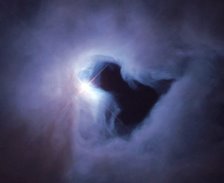



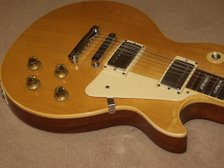






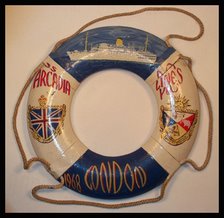


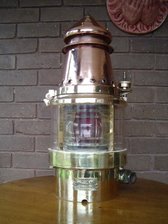



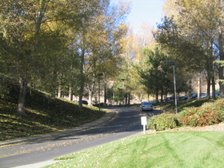









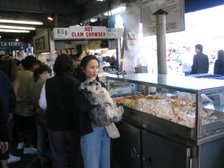





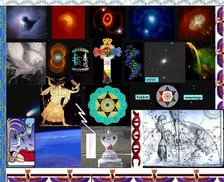
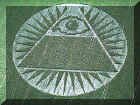
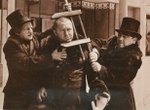
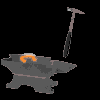


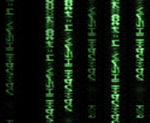


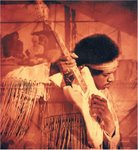














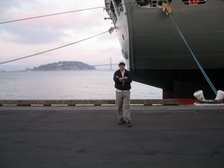



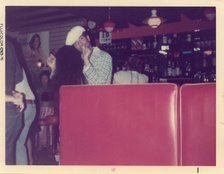
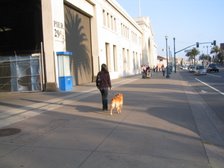












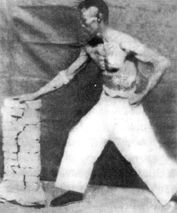



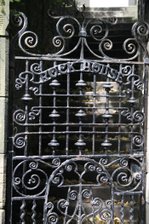









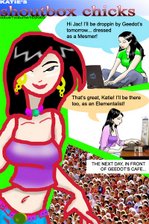
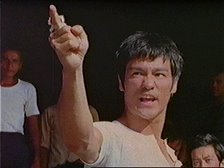



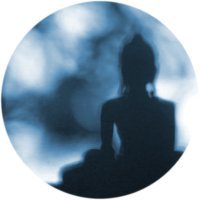



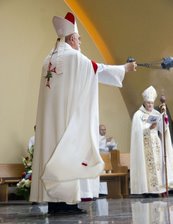
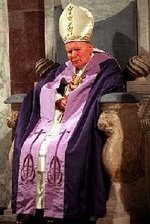


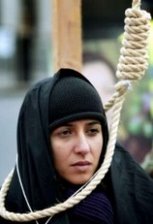

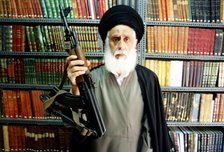



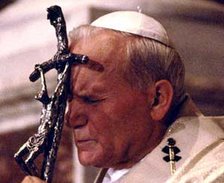



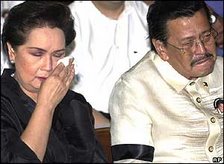

















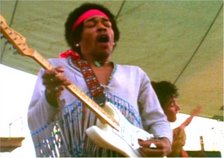
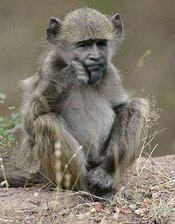

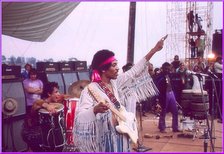



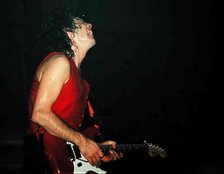



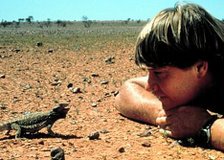
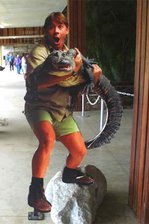

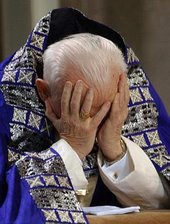







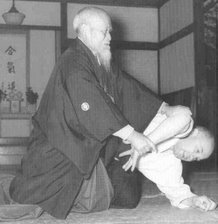
















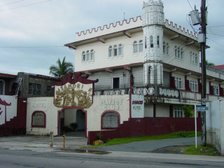
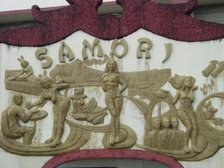










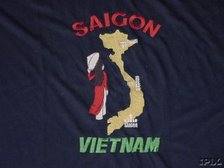



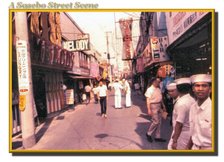

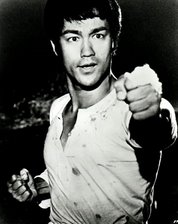




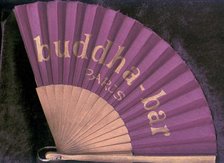
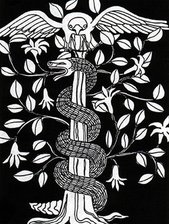
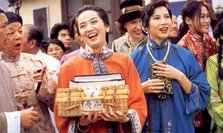


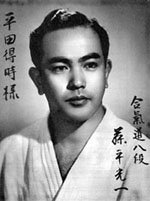



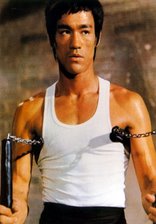
No comments:
Post a Comment